- Home
- Robin Cook
Cell Page 3
Cell Read online
Page 3
George took a deep, calming breath and directed his attention back to Paula. She certainly did look terrific and impressively “together.” He found himself regretting that he hadn’t followed up with her back in medical school and wondered if reviving an acquaintance with her would fulfill his promise to Kasey.
George’s musings were interrupted by Thorn launching into a slick presentation of Amalgamated Healthcare’s spectacular growth. He explained that the company was positioned to take full advantage of the Affordable Care Act, something most other insurance companies thought impossible, given the law’s restrictions on profit, but he and his inordinately competent team had figured out a way and were leading the charge. All they needed was an infusion of more capital to continue their spectacular expansion.
“The politicians, whether they meant to or not, have put the health insurance industry in the driver’s seat to manage what will more than likely balloon to nearly twenty percent of the United States’ GDP,” Thorn continued. “Most of us know deep down that they should have passed a kind of Medicare for everyone. But they didn’t have the courage. Instead they have handed the keys to us on a silver platter. This is an unprecedented opportunity, particularly in view of what you’re going to learn today. The world, not just the United States, is on the cusp of a paradigm shift in medical care as the profession is dragged kicking and screaming into the digital age. And we, Amalgamated, are going to be leading it.”
George felt a jolt of electricity surge through his body. Thorn had hit a nerve. Over the last several years, George had become vaguely uneasy about what was happening in medicine in general and in the specialty of radiology in particular. There were somewhat fewer positions available and salaries were heading south. It wasn’t an overwhelming change but nonetheless noticeable. Consequently Thorn’s words were jarring, giving substance to a nebulous yet vexing fear that he was entering the medical profession after it had passed its zenith.
“Our country,” Thorn continued, “is going to experience a democratization of medicine that is going to catch the medical profession by surprise, but not Amalgamated. Already the general public’s main source of medical information is not doctors, as it’s been for a number of centuries: it is the Internet and social media. To illustrate my point, compare the medical profession as you know it today to another industry, dominated by the iconic Eastman Kodak Company. Kodak thought it was in the film business rather than the image business.” He paused. “We all know how well that went.”
The audience laughed. Kodak had filed for bankruptcy in 2012.
“The medical profession thinks it’s in the sickness business. It is not. It is in the health business. Preserving and maintaining health and preventing disease are the future of medicine, not treatment in the form of ever more drugs and procedures. And I’m not talking about prevention in a passive sense. I’m talking about prevention as an active process, but not wasteful, like yearly physicals and full-body CT scans. And when treatment is needed, it will be directed for the individual, not some imaginary person representing the statistical mean.
“This is important, because a third of the almost four hundred billion dollars the public pays the pharmaceutical industry is totally wasted. That’s one hundred thirty billion dollars going down the drain. The drugs involved often have no positive effect on a specific individual. If a drug trial showed that it only helps five percent of patients, that means it doesn’t help ninety-five percent, even though side effects are pretty close to one hundred percent. Bad odds!
“We at Amalgamated don’t want to waste money on useless drugs and dangerous procedures. We want to treat the individual, not a statistical construct. How will this come to pass? Through this app!” Thorn waved toward the LED screens behind him as if he were a conductor of a symphony orchestra. Coinciding with his gesture were the first thirty seconds of Beethoven’s Fifth Symphony. Simultaneously the word iDoc flashed onto the screens in foot-high bold black letters.
After pausing for effect, Thorn turned back toward the audience: “A glowing example of the failure of current medicine is the fact that the shortage of primary-care physicians has never been solved. As a result, there are too many unnecessary and expensive visits to emergency rooms, too many specialists seeing patients who don’t need to be seen by them, too many procedures on patients who don’t need them, and too many patients being prescribed unneeded drugs. All of which means a massive number of unnecessary, wasteful payouts. Well, my friends, all that is going to change; there’s a new doctor in town! The twenty-first century’s primary-care physician is an FDA conditionally approved smartphone app, and its name is iDoc!”
Thorn again gestured toward the giant LED screens as the images of three smartphones made by the world’s largest manufacturers—Apple, Samsung, and Nokia—flashed. The phones displayed a single app: a white square containing a red cross with iDoc spelled out along the horizontal arm. George caught his breath from another jolt. He’d seen the icon before.
“iDoc and its incorporation into the smartphone application platform is a result of our close working relationships with leading smartphone manufacturers and developers. The end result is a marvelous convergence of the Internet, mobile phone technology, quantum cloud computing with our state-of-the-art D-Wave quantum supercomputer, social networking, digital medical genomics, wireless biosensors, and advanced imaging. iDoc will be the doctor of tomorrow, and we have it today!
“We’ve licensed the distinctive symbol of the International Red Cross, as we felt it imperative to use a universally recognized icon. Amalgamated Healthcare will also be making an additional donation to the organization with each download of the iDoc app. And we’re not stopping there. Amalgamated will mimic the Affordable Care Act in—what else?—affordability! Enrollees with incomes of up to four hundred percent above the poverty line will either have their smartphones subsidized or given out free. Regular phone plans will stay in effect for enrollees, but data plans will be converted to unlimited. Our subsidization of the data plans will again mimic that of the ACA. All data generated by the app will be stored on our cloud services, enabling an acceptable baseline phone configuration of three-G capability with a minimum of thirty-two GB of memory. Any current enrollees who now fall below those smartphone specifications will be upgraded at our expense.”
Now George felt a chill descend his spine. He had the distinct feeling he was witnessing history in the making. With the idea of a smartphone functioning as a primary-care physician, something he had thought about in the past, he was in shock. His mental association of the Amalgamated Healthcare presentation with one of Apple’s product releases was magnified. This was a big deal. He was also amazed that Amalgamated would be able to absorb all these costs and still have a profitable business plan. What was he missing?
4
CENTURY PLAZA HOTEL
CENTURY CITY, LOS ANGELES, CALIFORNIA
MONDAY, JUNE 30, 2014, 10:14 A.M.
George glanced around the room at the other attendees. No one spoke. No one coughed. No one moved. The only sound was that of the faint Celtic choir in the background.
George redirected his gaze toward the dais. Thorn was still twisted around, staring up at images of the smartphones like a proud father. When he turned back the crowd burst into applause.
“Hold your excitement,” Thorn said. “There’s more. Shortly you are going to hear brief presentations from our three other speakers this morning. First will be Dr. Paula Stonebrenner.” He gestured toward Paula, and George looked over at her. She stood briefly and nodded to the audience. If she was nervous, it didn’t show. There was a smattering of applause.
Thorn continued. “Dr. Stonebrenner, I know, doesn’t look old enough to be an MD, but I assure you that she is. She will be giving a very short overview of iDoc and its capabilities. She is the best person for this task, as she is the individual who gets the credit for the idea of a smartphone functioning a
s a twenty-first-century primary-care physician. There have been multiple apps for smartphones configured to do various and sundry medical functions, but it was Dr. Stonebrenner who came up with the brilliant concept of putting them all together in a purposeful algorithm to create a true ersatz physician on duty twenty-four-seven for a particular individual, truly personalized medicine.”
“Holy shit!” George whispered to himself. He felt a surge of color suffusing his face. He couldn’t believe what he’d just heard and didn’t know whether to be angry or flattered. Suddenly George realized why Paula had invited him to the presentation. They’d had a conversation about this years before. She hadn’t come up with the concept. She’d gotten the idea for a smartphone primary-care physician from him!
When George had first come out to L.A. for his residency, he’d known that Paula was coming, too, not for a residency but rather for a job with Amalgamated Healthcare. They’d talked about being in the same city before graduation. She’d been in the MD-MBA program during medical school, a fact that they’d argued about on occasion. It had been George’s opinion that she shouldn’t have taken a slot to become an MD if she had no intention of ever practicing medicine. There were too many people who really wanted to be doctors who couldn’t get a spot in medical school, and that was leading to a shortage of primary-care doctors. Paula, of course, had seen the issue differently. It had been her contention that the business of medicine was so important there had to be people who understood all sides of it. Neither convinced the other.
When George arrived in L.A. he tried to contact Paula a few times, but she never returned his calls. He didn’t have her home number or address, so he’d only left messages at Amalgamated’s main number. He never knew if she got them or not. But then, after an emotionally draining trip back home for Thanksgiving 2011, he made a more determined effort to track her down. His mother, Harriet, had died unexpectedly while he was home and, coming back to L.A., he had never felt more alone. He hadn’t been particularly close to his mother, but watching her die was one of the most painful episodes of his life.
George’s father had died when he was three and his mother remarried when George was four, but George never got along with his stepfather. On top of that, his stepfather had a son three years older than George. Then his mother and his stepfather had a daughter, and George ended up the odd man out, spending his high school years living with his grandmother, with whom he had a close relationship. During medical school his stepfather died, and his mother developed a series of health issues from smoking and obesity, which turned out to be deadly just four days short of her sixty-seventh birthday.
The day had started out routinely, but by early afternoon Harriet began wheezing and then developed chest pain. When George suggested that they call her doctor, she said she didn’t have one. Her primary-care physician had changed his practice to the concierge model, which Harriet had refused to join because she thought the yearly payment way too steep. When Harriet turned sixty-five, she tried but failed to find a doctor who would accept Medicare.
So on that fateful Thanksgiving Day there was no doctor to call or see. And she refused to go to the hospital. George pleaded with her to go but was accused of meddling. He tried to call a few of the local physicians that he could find online but wasn’t able to get anyone on the phone. He needed someone either to see her or tell her to go to the hospital. While he was making the calls, his mother became short of breath and began to perspire. He called 911. The dispatcher said the local ambulances were all occupied but that one from a distant town would be there ASAP but couldn’t give an ETA.
With growing consternation George watched his mother turn ashen. Realizing he couldn’t wait any longer, he managed to get her into the backseat of her car despite her reluctance, and rushed her to the local hospital. When he pulled up to the ER, he discovered it had been closed. “Consolidation” was what the corporation that bought the facility had called it. George drove as fast as he could to the next closest hospital, which was owned by the same corporation. It was located a half hour away, and by the time George pulled in, jumped out of the car, and opened the back door, his mother was dead. The sheer frustration of it all nearly drove George mad. He had never cried much, even as a child, but on that cold, dreary day he sat in that car and wept.
5
CENTURY PLAZA HOTEL
CENTURY CITY, LOS ANGELES, CALIFORNIA
MONDAY, JUNE 30, 2014, 10:18 A.M.
George reached up with both hands and rubbed his eyes to get himself under control. It always bothered him to think about his mother’s passing, and since Kasey’s death the unwelcome remembrance of the episode had become more frequent. The two episodes shared a similarity: Both had occurred in his presence.
Blinking his eyes open, George looked back at the dais. Paula had sat down and Thorn was saying, “I am also pleased to introduce to you Dr. Clayton Hanson.” Thorn pointed over to Clayton, who, like Paula, rose to his feet to acknowledge a bit of applause. From the standpoint of appearances, Clayton looked as good as Thorn, decked out in equally expensive gentlemen’s finery. Where he surpassed Thorn was his overly tanned face, accentuated by his carefully coiffed silver hair. He was old enough to appear learned and young enough to attract women of any age.
“Dr. Hanson, vice chair of academic affairs for the L.A. University Medical Center’s department of radiology, will be giving us an overview of iDoc’s advanced imaging capabilities, but before Dr. Hanson, I would like you to hear from Lewis Langley. He’ll be saying a few technical words about the unique character of the iDoc algorithm.”
Langley nodded slowly at the mention of his name but didn’t stand. He didn’t look anything like the typical software guy and was miles away from the other two men with whom he was sharing the dais, wearing shit-kicker boots with black jeans that were topped off with a huge, silver-plated Texas longhorn belt buckle. To round out the outfit, he wore a black sport jacket over an open-collared black shirt.
For the next few minutes George found it hard to concentrate on Thorn’s words. His unexpected trip down memory lane of that awful Thanksgiving Day and his mother’s death had him freaked out. On the flight back to L.A. after the funeral, he had found himself agonizing over the way the lack of primary-care physicians had contributed to the nightmare.
As fate would have it, the airplane magazine had an article about a phone app that could anticipate heart attacks. That had been the stimulus that made him think about the phone as a primary-care doctor. There were already six billion cell phones in the world and the technology was there; it just needed to be channeled. Although he didn’t do anything about this revelation—what could he do as a first-year resident—he did mention the idea to Paula when he finally did get in touch with her.
They had met for a drink, and after some small talk he told her his mom’s sad story and his idea of a cell phone functioning as a full-blown primary-care physician. He was convinced a device like that would have been a godsend to his mother and probably would have saved her life.
Paula was immediately taken by the concept and told him the idea was perfect for Amalgamated, which alarmed George. It was his belief that if anybody did it, it should be the medical profession, not an insurance company, since the smartphone, in a very real way, would be practicing medicine. Paula’s response was to laugh, pointing out that the medical profession would never get around to it, having dragged their collective feet at the idea of competition of any sort as well as their disinclination to embrace the digital world.
In the end, George’s effort in reconnecting with Paula didn’t pan out. As busy as he was with his first year of residency, he didn’t call her for months, and when he did, she declined the offer of getting together. The next time he had heard from her was just the previous week, when she texted him the invitation to the event out of the blue. The fact that the presentation was about the smartphone being a primary-care physician was a complete an
d total surprise.
George again considered getting up and walking out. She obviously latched on to his idea and ran with it without any attempt to connect with him even just to acknowledge his contribution. George squirmed in his seat, his mind racing to think of what to do about it. He shifted his weight to stand and leave. The man next to him even moved to let him by, but George didn’t get up. Instead he relaxed back into his seat. What purpose would it serve to walk out? Just wanting to get away was a childish response.
It ended up being a good thing that he stayed, too. Thorn still had a few surprises. “Amalgamated Healthcare is proud and will be announcing to the media that we are near the end of a very successful beta test of the iDoc algorithm and app. For almost four months, twenty thousand people here in the Los Angeles metropolitan area, who had signed strict NDAs, or nondisclosure agreements, have been using the iDoc app with truly phenomenal success. As a primary-care physician, iDoc has proven itself to be utterly reliable, far better than a flesh-and-blood general practitioner under our current health care system. And this sentiment comes directly from our participant surveys. Enrollees love it!”
George swallowed with some difficulty. His mouth had gone dry. He’d seen the iDoc app on Kasey’s phone but had not known what it was, and she hadn’t told him. She had been part of Amalgamated’s beta test! The news also gave him a queasy feeling in the pit of his stomach.
As Thorn went on to explain that iDoc would be immediately and immensely profitable, George shook his head with a mixture of disgust and admiration. iDoc was going to be performing an end run around the whole medical industry. It was about to become the doctor!

 Shock
Shock Mutation
Mutation Chromosome 6
Chromosome 6 Brain
Brain Intervention
Intervention Invasion
Invasion The Legend of Parzival: The Epic Story of His Quest for the Grail
The Legend of Parzival: The Epic Story of His Quest for the Grail Acceptable Risk
Acceptable Risk Cell
Cell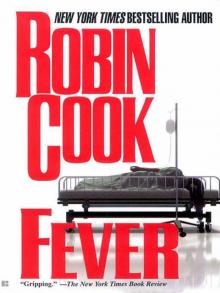 Fever
Fever Death Benefit
Death Benefit Contagion
Contagion Mindbend
Mindbend Coma
Coma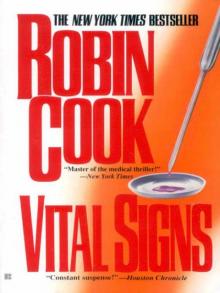 Vital Signs
Vital Signs Harmful Intent
Harmful Intent Critical
Critical Foreign Body
Foreign Body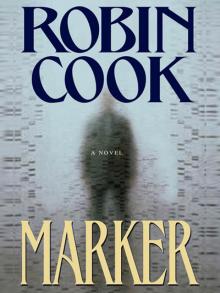 Marker
Marker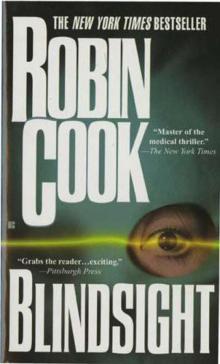 Blindsight
Blindsight Terminal
Terminal Sphinx
Sphinx Fatal Cure
Fatal Cure Host
Host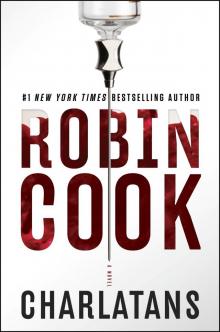 Charlatans
Charlatans Crisis
Crisis Vector
Vector Toxin
Toxin Abduction
Abduction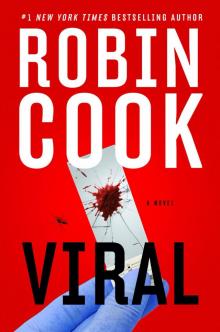 Viral
Viral Pandemic
Pandemic Outbreak
Outbreak Vector js&lm-4
Vector js&lm-4 Godplayer
Godplayer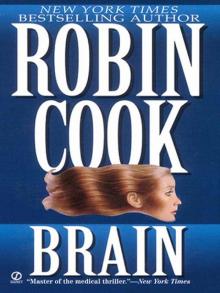 A Brain
A Brain Year of the Intern
Year of the Intern Outbreak dmb-1
Outbreak dmb-1 Cure
Cure Mortal Fear
Mortal Fear The Legend of Parzival
The Legend of Parzival Vital Signs dmb-2
Vital Signs dmb-2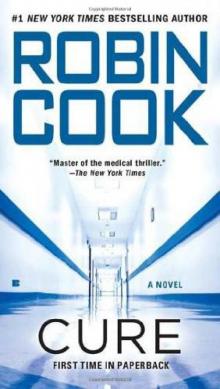 Cure (2010) sam-10
Cure (2010) sam-10 Blindsight sam-1
Blindsight sam-1 The Year of the Intern
The Year of the Intern Intervention sam-9
Intervention sam-9 Foreign Body sam-8
Foreign Body sam-8